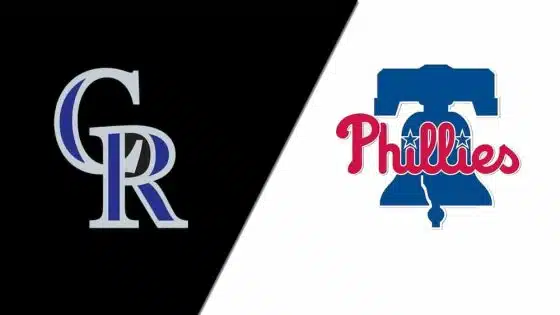By Matt Albertson, Historical Columnist
The 1982 hot stove was white-hot for the Philadelphia Phillies. They made the infamous five-for-one deal, surrendering all-star Manny Trillo, prospect Julio Franco and three others in exchange for outfielder Von Hayes from Cleveland. Days later the club traded Mike Krukow, Mark Davis and C.L. Penigar to San Francisco for reliever Al Holland and former National League MVP Joe Morgan. It was an offseason where club president Bill Giles went all in on trying to secure a pennant, acquiring experience at the expense of promising youth. The Morgan and Holland trade worked for the Phils. Holland put up great numbers in three years with the club and was among the league leaders for relievers in an incredible 1983 season.
Morgan was also an outstanding addition for the "Wheeze Kids". In his 1982 season with the Giants, he slashed .289/.400/.438 with 14 home runs and 61 RBI and worth 5.1 WAR. Not bad for a 38-year-old infielder. With the Phillies in 1983, he slashed .280/.370/.403 with 16 home runs and 59 RBI and was worth 3.2 WAR. While Morgan's offensive numbers in the 1983 postseason were low, he provided a steadying force at second base for a team trying to get one more championship before the roster began to turnover.
The future Hall of Famer only played one season in Philadelphia near the end of his career, but was one of the greatest second baseman in baseball history, playing 22 years for Houston, Cincinnati, San Francisco, Philadelphia and Oakland, with a career slash line of .271/.392/.427, 268 home runs, and 1,133 RBI. Baseball historian Bill James called Morgan one of the top percentages players of all-time. Hall of Fame manager Sparky Anderson once said that Morgan was the smartest player he ever coached while Sports Illustrated proclaimed in a 1976 issue that he was "The Complete Player".
Career Accomplishments
- 1990 Hall of Fame inductee
- 10-time All-Star
- National League MVP 1975 and 1976
- Five-time Gold Glove Award winner
- 1982 NL Comeback Player of the Year
- Silver Slugger award winner
- Two-time World Series champion: 1975 and 1976
*Awards were not factored into the formula
Career-Defining Moment
Morgan's 1976 season was the best of his two-decade career, slashing .320/.444/.576 with 27 home runs, 111 RBI, 60 stolen bases and 111 walks and a 1.020 OPS. He led the league in on-base percentage, slugging, and OPS that year and slashed .333/.412/.733 in the Reds' four game sweep of the New York Yankees.
Reasoning for ranking
Roberts scored 78 points in our formula. He totaled 100.3 WAR, averaging 4.56 WAR over his 22 seasons. He had 17 seasons of 2+ WAR and 10 seasons at 5+ WAR, and five seasons at 8+ WAR, totaling 72 points. His 2,517 hits ranks 98th all-time, 449 doubles are 107th all-time, 96 triples are 175th all-time, 268 home runs are 188th all-time and 1,133 RBI are 193rd all-time, totaling six points.
Roberts scored one point on our subjective importance scale because he was only with the club for one season. Despite his above average play on the field that helped lead the team to a National League pennant, his acquisition depleted an already weak farm system.
Explanation of scientific formula
The player rankings formula combines both traditional and advanced statistics/metrics and assigns a point total to each category.
Previous Players
- No. 25 – Ryan Howard
- No. 24 – Roy Oswalt
- No. 23 – Kenny Lofton
- No. 22 – Jimmy Rollins
- No. 21 – Cole Hamels
- No. 20 - Cliff Lee
- No. 19 – Tony Perez
- No. 18 – Bobby Abreu
- No. 17 – Scott Rolen
- No. 16 – Richie Ashburn
- No. 15 – Chase Utley
- No. 14 – Ryne Sandberg
- No. 13 – Dick Allen
- No. 12 – Jim Bunning
- No. 11 – Fergie Jenkins
- No. 10 – Jim Thome
- No. 9 – Curt Schilling
- No. 8 – Roy Halladay
- No. 7 – Robin Roberts





